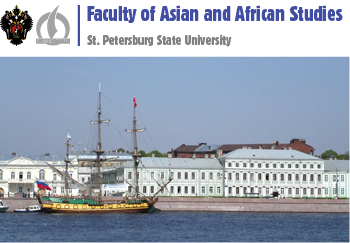Scholars study the world’s first printed Quran from the M. Gorky Scientific Library of St Petersburg University
The second edition of the world’s first printed Quran, kept in the Rare Books and Manuscripts Department of the M Gorky Scientific Library of St Petersburg University, will be the subject of a study by the Centre for Islamic Studies at St Petersburg University. The collaboration agreement was signed by Marina Karpova, Director of the M Gorky Scientific Library of St Petersburg University, and Damir Mukhetdinov, Head of the Centre for Islamic Studies at St Petersburg University.
Machumetis Saracenorum principis, eiusque successorum vitae, doctrina, ac ipse Alcoran (‘The life and teachings of Muhammad, ruler of the Saracens, and of his successors, and the Quran itself), compiled by the Zurich theologian Theodore Bibliander, was first published in Latin in 1543. The second edition appeared in 1550. The Machumetis Saracenorum principis was based on the earliest translation of the Quran into Medieval Latin — Lex Mahumet pseudoprophete (‘Law of Muhammad the false prophet’). This translation was commissioned by Abbot Peter the Venerable and produced by the English scholar and priest Robert of Ketton in the Spanish city of Toledo around 1143. Until the 18th century, European translations of the Quran merely re-translated Robert of Ketton’s Latin version into their own language, rather than translating the Quran directly from Arabic. This, in turn, influenced the translations of the Book of the Muslims into modern European languages, including Russian.
Other copies of The Life and Teachings of Muhammad are now kept in major libraries around the world, such as: the Newberry Library (Chicago, the USA); the Bavarian State Library (Munich, Germany); and Lyon Public Library (Lyon, France).
Professor Damir Mukhetdinov, Doctor of Theology, has studied in detail Latin translations of the Quran. He noted that the surge of interest in Islam in the 12th century was due to the increasing contacts between Western Christians and the Islamic world. ‘First and foremost, it was the Crusades and the Reconquista that allowed Christians to “re-conquer” the Moorish territory in the south of the Iberian Peninsula in the 11th—12th centuries. Consequently, Christians reclaimed such important cultural, economic and political centres as Toledo and Lisbon. After the Reconquista, European Christians gained access to the richest collections of Arab sources,’ Damir Mukhetdinov noted. ‘Thence, Toledo became one of the main intellectual centres of Europe of the time and the crossroads of Jewish, Christian and Muslim spiritual traditions.’
It is noteworthy that the translation made by the Catholic Robert of Ketton was revised for publication by the Protestant theologian, orientalist and publisher Theodore Bibliander. The preface to the printed edition of the Machumetis Saracenorum principis, a copy of which is now kept in St Petersburg University, is attributed to Martin Luther, the seminal figure of the Protestant Reformation, who must have been involved in the publication.
We need to make an objective assessment of Luther’s preface to the Machumetis Saracenorum principis, for Martin Luther is the founder of the second largest Christian denomination. It is from his perspective that current and past Protestants view the Islam.
Professor Damir Mukhetdinov, Doctor of Theology, Head of the Centre for Islamic Studies at St Petersburg University
‘We want to translate this part of the publication because it will help to shed light on the essential nature of the first printed Quran. It has been in the Library for a long time; yet, in fact, it remains understudied, largely fallen under the radar of theological institutions. For imams, theologians, and Quran scholars, it is still terra incognita,’ Professor Mukhetdinov said.
Theodore Bibliander’s compilation is discovered to be a self-contradictory, problematic text. In the 16th century, Western knowledge of Islam was very inconsistent and yet to be developed into a coherent tradition. New information was simply placed alongside other materials, sometimes substantiating older materials, sometimes directly contradicting them. Such ambiguities indicate that in the history of Muslim-Christian relations, the 16th century was a period of transition. Evidently, there is room for further research. Professor Mukhetdinov added that the Rare Books and Manuscripts Department of the M. Gorky Scientific Library of St Petersburg University holds a large number of books of great interest to Islamic scholars.
The Centre for Islamic Studies at St Petersburg University is involved in the publication of the book series ‘The Quran in Russia’, initiated by the Medina publishing house. The project aims to acquaint the general public with the most important copies of the holy book of Islam. They were brought to Russia in different historical eras and became an integral part of its cultural and spiritual heritage. The series opened with the first Russian translation of the Quran — ‘Alkoran o Magomete, ili Zakon turetskiy’ — a translation from French of André Du Ryer’s ‘L’Alcoran de Mahomet’. The translation was commissioned by Peter the Great and published in St Petersburg in 1716. Also, Medina Publishing has already released a reprint edition of the first full Arabic text of the Quran, published in Russia at the behest of Catherine the Great in 1787. The calligraphic font for the publication was designed by the calligrapher and expert on the Quran Mullah Usman Ismail. The edition contains explanatory notes about the different interpretations of the Quranic text. Currently, both original editions are kept in the Russian National Library, a partner in the project.
- Category: News
- Hits: 393




